Billfish Satellite Tagging Data Provides an Understanding of
- Long-term and Seasonal Migration
- Habitat use
- Feeding behavior
- Environmental preferences
Sailfish and Blue Marlin Migratory Characteristics
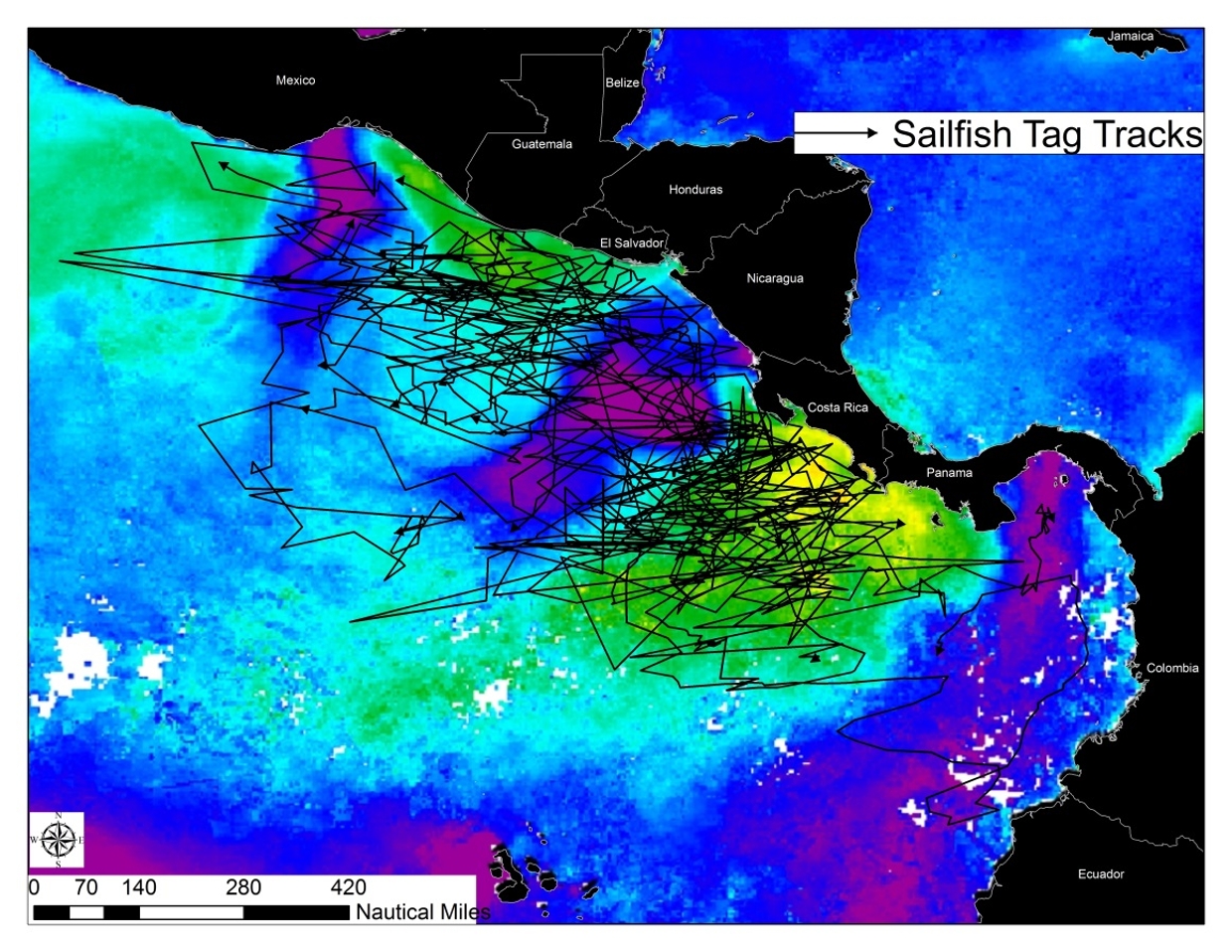
Sailfish equipped with satellite tags have been tracked throughout the Eastern Pacific and are mapped in comparison to oceanographic and environmental features such as sea surface temperature which can be seen in the image above. Sailfish sho affinity for the regions near upwelling zones such as the southeastern edge of the feature known as the Costa Rica Dome created by the Papagayo winds.
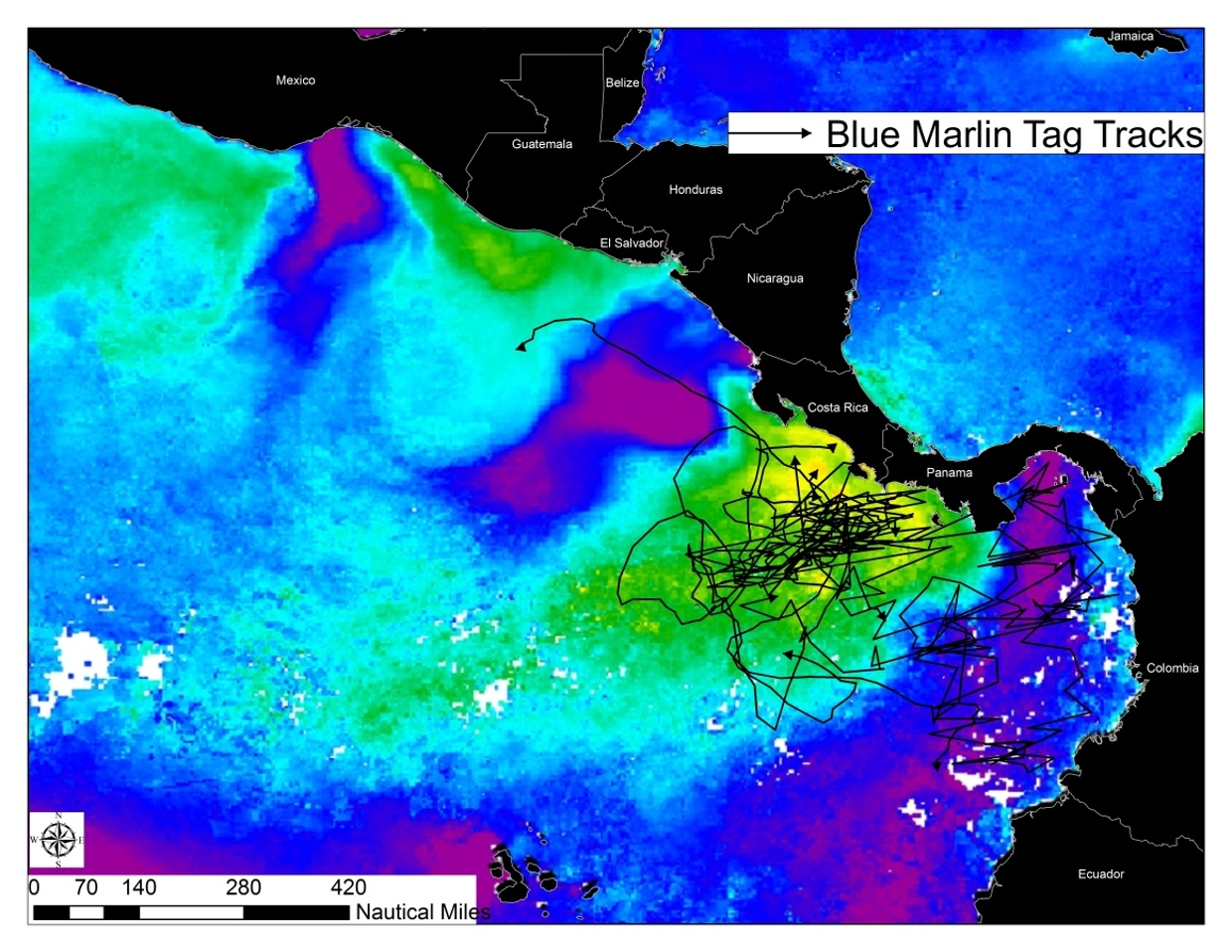
Blue Marlin equipped with satellite tags differ from sailfish in a number of ways. Blue Marlin in the region remain in the same general area for longer periods and show strong affinity for the area known as the Coco's Island Ridge. The area has unique features for this region and contains many underwater features that create small scale upwellings and may be preferential for Blue Marlin feeding.
Daily Sailfish Activity
Recent projects have been conducted to better understasnd the daily activity and behavior of sailfish in the Eastern Pacific. Results suggest the level of sunlight plays an important role in intra-daily behavior due to the visual hunting strategy employed by sailfish to catch prey. An increase in sailfish activity was found with even a slight change in light intensity found during the full moon (Figure Below).
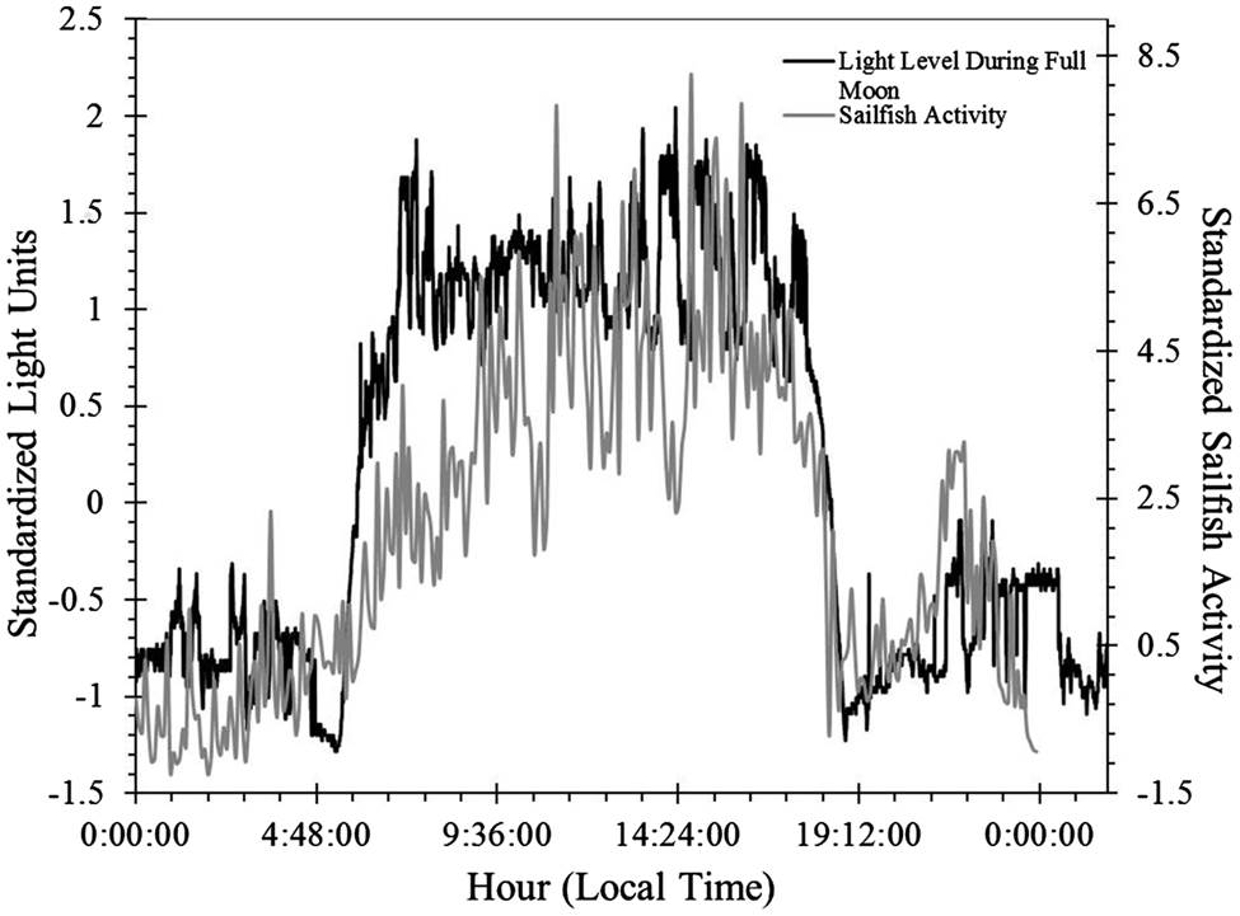
Daily Diving Behavior
Sailfish in the Eastern Pacific spend a vast majority of time at the surface especially during the nighttime dark hours. Once the sun begins to rise their actiivty greatly increases along with their diving actiivty which can be seen in the figure below. Sailfish equipped with satellite tags deplyed by the Billfish Research Lab have never undertaken deep dives during the night.
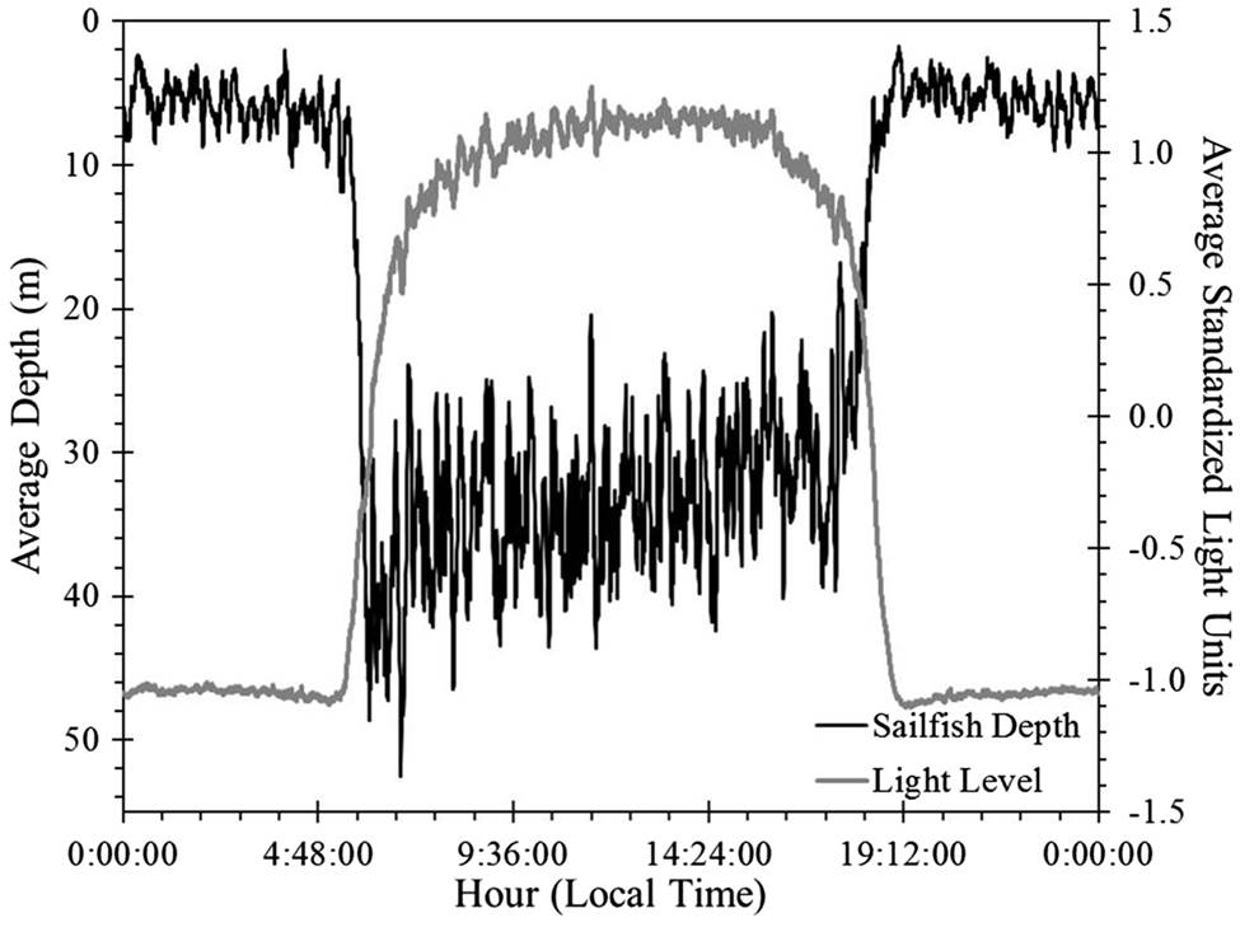
Further restricting Sailfish diving behavior is the presence of extremely low dissolved oxygen concentrations at depth. The figure below shows what is considered the minimum amount of oxygen for billfish survival at 1ml/l and the tagged Sailfish consistently remain above this minimum oxygen threshold which appears to act as a vertical barrier to their available habitat.
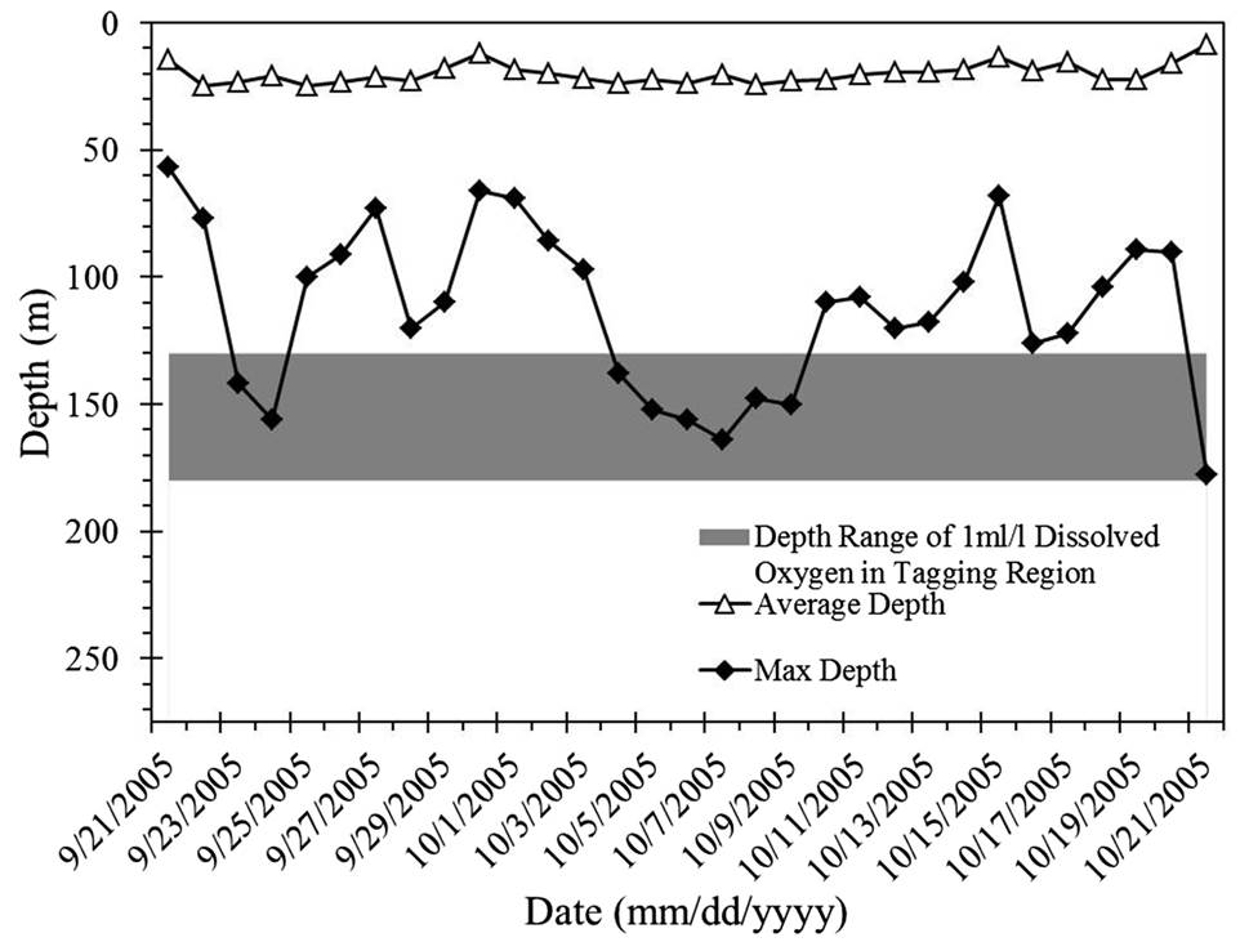
Pohlot and Ehrhardt (2017) "An analysis of sailfish daily activity in the Eastern Pacific Ocean using satellite tagging and recreational fisheries data"








